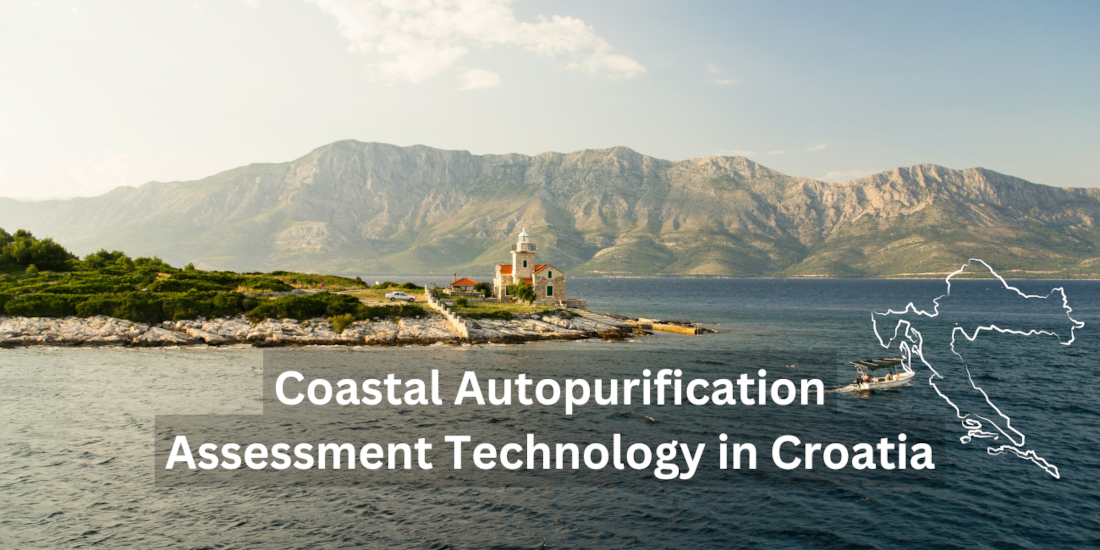
The Coastal Autopurification Assessment Technology (CAAT) project created innovative solutions for measuring the quality and self-purification capacity of coastal waters. The technology is based on oceanographic and atmospheric modelling and research into flows of pollutants into – and their dispersal within – water bodies.
CAAT will bolster the EU’s efforts to create a sustainable blue economy encompassing all industries and sectors related to oceans, seas and coasts.
Responding to developmental pressures
Due to its length and the large number of islands, Croatia’s Adriatic coast faces significant developmental pressures and sizeable impacts from climate change. This makes integrated management and sustainable planning in coastal areas vital.
Solutions are needed that can predict the effect of various kinds of pollution, while also taking into account projected future developments and changes in climate.
Much of the pollution on Croatia’s Adriatic coast is transported by surface and subsurface run-off – water that does not soak into the ground but flows over land into water bodies – and rivers that empty into the Adriatic Sea. The nutrients in this water accelerate the eutrophication of coastal waters. Eutrophication leads to excessive growth of aquatic plants and algae – many of them harmful to marine life – and compromises the self-purification ability of the waters.
Along with the environmental consequences, the process renders water unfit for bathing, other leisure pursuits and economic activities such as fishing. The economic and social consequences are potentially devastating.
Building on previous research
Running from 2019 to 2023, CAAT assembled a team of 19researchers from four partner institutions, all of them based in Split, Croatia’s largest coastal city: the Faculty of Civil Engineering, Architecture and Geodesy; the Faculty of Electrical Engineering, Mechanical Engineering and Naval Architecture; the Institute of Oceanography and Fisheries; and the Faculty of Science.
The project drew on extensive previous research the partners had conducted along and around the Croatian coast. The research was combined with methods for measuring sea water quality and development of tools to support coastal management. The tools have a wide range of uses in both the public and private sectors.
An inventory was compiled of the sources of pollution in Croatia’s coastal areas and in the basins of the rivers flowing into the Adriatic. Measurements were taken around the mouth of the Jadro river, in Vranjic Bay, Split, using a drone with an integrated hyperspectral camera and a boat equipped with sensors and probes. These exercises assessed the salinity, temperature and turbidity of the water, as well as levels of dissolved oxygen, chlorophyll and dissolved organic matter.
On this basis, a methodology was formulated for determining the self-purification capacity of coastal waters. The methodology makes it possible to simulate water conditions in different development and climate change scenarios.
Technological development
To validate the methods, technologies were developed to monitor various water quality indicators and to automate measurement processes. An important part of this element of the project was testing new sensors to measure coastal water quality, including microbiological, physico-chemical and bacteriological parameters.
The sensors were integrated into buoys and tested in the hydrotechnical laboratory in Žrnovnica and at the mouths of the Žrnovnica and Jadro rivers.
A remotely operated vehicle, on which further sensors can be installed, was acquired to monitor the sensors and perform additional testing and measurement. A high-frequency radar system was installed near the Institute of Oceanography and Fisheries. It was calibrated to measure currents over the surface of the Brač Channel and Kaštela Bay. Researchers were trained to use radar for measuring currents.
In the short term, the technology will provide a cost-effective solution for monitoring coastal water quality, thereby making such infrastructure more accessible and helping to ensure its widespread use. A computer application and online interface were set up to disseminate the project findings.
Along with its water quality forecasting methods, CAAT produced guidelines for managing coastal areas to ensure better water quality, which will contribute to better economic and social development.
Towards European and global goals
The project makes vital contributions to achieving key European and global sustainability objectives. Regarding the UN Sustainable Development Goals (SDGs), its provision of inexpensive and innovative solutions for monitoring coastal waters is relevant to SDG 9 on building resilient infrastructure, promoting inclusive and sustainable industrialisation and fostering innovation.
The CAAT methodology for predicting potential changes in climate that can significantly affect coastal areas directly addresses SDG 11 on making cities and human settlements inclusive, safe, resilient, and sustainable, and SDG 13 on combating climate change and its impacts.
In addition, by monitoring the self-purification capacity of coastal water, the tools facilitate sustainable planning. They thus make an indirect contribution to achieving SDG 12 on ensuring sustainable consumption and production by supporting the implementation of sustainable tourism.
In terms of European policy goals, CAAT will help local and regional institutions implement the EU’s Water Framework Directive, which sets out rules to halt deterioration in the status of EU water bodies, and its Marine Strategy Framework Directive, which protects marine ecosystems and biodiversity.
Find out more
Sustainable blue economy in the EU